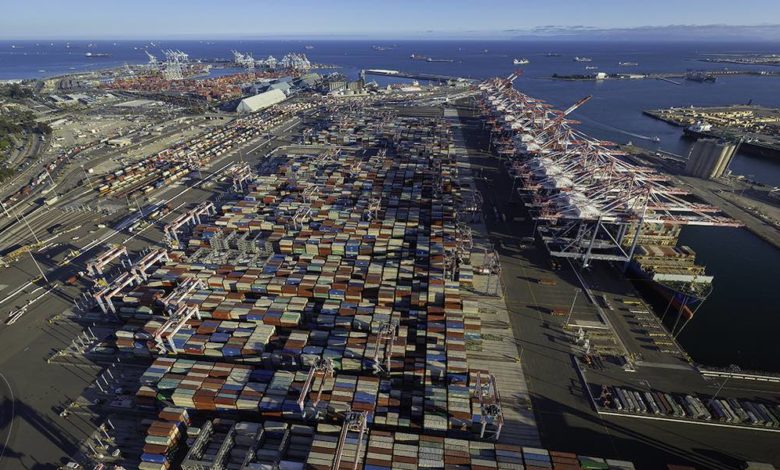82 containerships wait off Southern California on day LA and Long Beach start penalising late box pick-ups

Monday sees the start of a new $100 penalty for any container that has spent more than nine days waiting for pick-up at America’s twin top maritime gateway ports of Los Angeles and Long Beach.
The new state-created fee is one of many measures the White House and American ports have taken in recent months to try and alleviate the extreme container crunch that has put shipping firmly in the mainstream American media this year.
German carrier Hapag-Lloyd made clear that the new charge will be passed on to clients.
“This is a port authority announced and levied charge, which, as a pass-through charge, will be for the account of the merchant,” Hapag-Lloyd stated in a new update to clients.
Today’s introduction of a late fee comes at a time when there are 82 boxships waiting for berths to free up outside America’s top two ports on the west coast.
As of Friday there were 40,700 containers that had been waiting for more than nine days at both ports, an improvement on the 70,600 tardy boxes recorded on November 1.
Further north along America’s congested west coast, the port of Tacoma is also readying its own late pick up charges.

Monday sees the start of a new $100 penalty for any container that has spent more than days waiting ……….How many days?????
More than days would be weeks, months, or years. So one week basically would qualify for “more than days”
9 days….read the article.
this was postponed for one week and insiders said they have no idea how to bill the charges as most of the time is not the BCO (or owner of the cargo) but the terminals with closed areas, no appointments available
how do you bill a costumer that have a container sitting at the port for over 29 days (his container is been blocked by many containers) he want his container ASAP so will he get charged for not picking up his container???? the Big one is you have to have a dual transaction to be able to pick up the loaded containers!!!!!!! what does that mean????? one for one you need to bring an empty container to be able to take a loaded container and of course there are no chassis (if you do not own a fleet of chassis, you are out of luck) so if the terminal does not have chassis how does the container gets pick up????? who’s fault is it? this are just a few issues we face every day in LB and LA
I don’t understand. Are the empty containers waiting to be picked up by ships being fined, or are the full containers waiting to be loaded on trucks and freight trains? If the fine is levied against containers waiting to be picked up by trucks and trains, how is it the container ships’ responsibility to pay fines on supply chain problems they don’t control. Please explain.
California banned truck made before a certain date when new anti-pollution rules came into effect. The cities also bannered non union owner operator truckers from picking up containers.
It is not the fault of those waiting their shipments.
To answer all questions above – this is for empty containers only that are sitting at port for a set number of days. For port, it is 9 days. For rail, it is 6 days. For the empties that are clogging up the storage areas and not being picked up, the carrier/cargo line will be charged.
If it is the empties I can understand.
Not sure if you are correct. Why would there be empty containers at the port? The containers at the port are full containers that have been off loaded from the incoming vessels and are waiting to be picked up. Containers are not emptied at the port, FCL’s are picked up and delivered directly to the customer and LCL’s would be picked up by the Freight Forwarder, brought back to their facilities and broken down. Customers cannot get truckers to pick up the containers at the port so they sit there.
Who do those knuckleheads think actually end up paying the fine? The additional cost will keep being passed down to the end of the line. The end consumer (you) are at the end of the line.